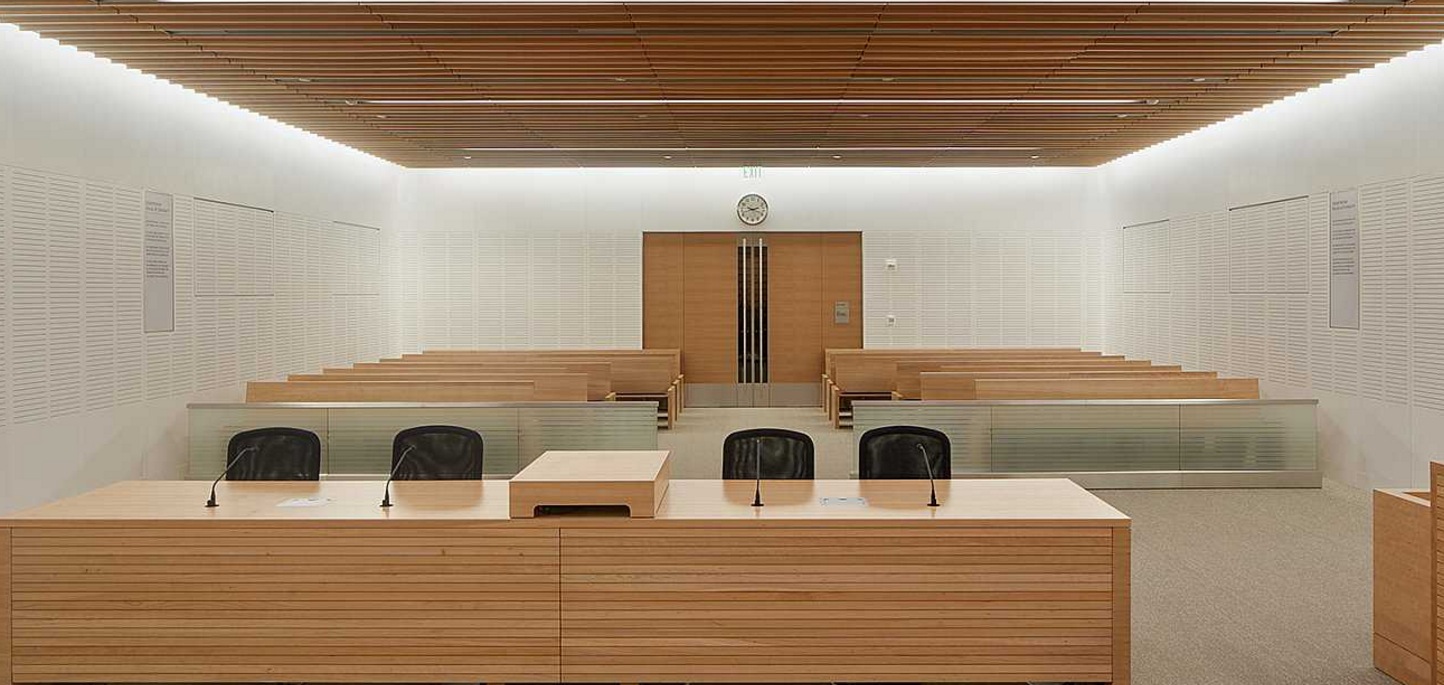The American Institute of Architects’ Academy of Architecture for Justice (AIA AAJ) named the projects that have received 2015 Justice Facilities Review Awards.
The three Citation winners were CO Architects’ South County Justice Center, Superior Court of Tulare County in Porterville, Calif.; SOM’s San Bernardino Justice Center in San Bernardino, Calif.; and RMKM Architecture’s East Mesa Public Safety Complex in Las Cruces, N.M.
According to AIA, the Justice Facility Review documents “best practices in planning and design for Justice Architecture, including functionality, security and safety, technology, accessibility, community impact, sustainability and economic feasibility (first cost and long-term cost of ownership), longevity (lifecycle performance and operation), as well as aesthetic achievements are essential elements for identifying the success of these projects.”
Sustainable design, including meeting a minimum of 60% reduction in energy use from regional baselines, and incorporating innovations in planning, design, and sustainability is also factored in.
Five entries were also published by AIA AAJ: NORR Limited’s Elgin County Courthouse in St. Thomas, Ontario; Lionakis’ Stanislaus County Juvenile Commitment Facility in Modesto, Calif.; DLR Group’s Superior Court of California, Calaveras County Courthouse in San Andreas, Calif.; RicciGreene Associates and Bushey Feight Morin Architects’ Catonsville District Courthouse in Catonsville, Md.; and DLR Group’s Everett Municipal Court in Everett, Wa.
Related Stories
| Mar 12, 2014
14 new ideas for doors and door hardware
From a high-tech classroom lockdown system to an impact-resistant wide-stile door line, BD+C editors present a collection of door and door hardware innovations.
| Jan 28, 2014
16 awe-inspiring interior designs from around the world [slideshow]
The International Interior Design Association released the winners of its 4th Annual Global Excellence Awards. Here's a recap of the winning projects.
| Jan 13, 2014
Custom exterior fabricator A. Zahner unveils free façade design software for architects
The web-based tool uses the company's factory floor like "a massive rapid prototype machine,” allowing designers to manipulate designs on the fly based on cost and other factors, according to CEO/President Bill Zahner.
| Jan 11, 2014
Getting to net-zero energy with brick masonry construction [AIA course]
When targeting net-zero energy performance, AEC professionals are advised to tackle energy demand first. This AIA course covers brick masonry's role in reducing energy consumption in buildings.
| Dec 13, 2013
Safe and sound: 10 solutions for fire and life safety
From a dual fire-CO detector to an aspiration-sensing fire alarm, BD+C editors present a roundup of new fire and life safety products and technologies.
| Dec 10, 2013
16 great solutions for architects, engineers, and contractors
From a crowd-funded smart shovel to a why-didn’t-someone-do-this-sooner scheme for managing traffic in public restrooms, these ideas are noteworthy for creative problem-solving. Here are some of the most intriguing innovations the BD+C community has brought to our attention this year.
| Dec 9, 2013
Bethlehem, Pa., receives preservation award for Bethlehem Steel building renovation
Bethlehem, Pa., is a recipient of a 2013 award by Preservation Pennsylvania for a renovation of the oldest building on the former Bethlehem Steel Corp. site.
| Nov 27, 2013
Wonder walls: 13 choices for the building envelope
BD+C editors present a roundup of the latest technologies and applications in exterior wall systems, from a tapered metal wall installation in Oklahoma to a textured precast concrete solution in North Carolina.
| Nov 26, 2013
Construction costs rise for 22nd straight month in November
Construction costs in North America rose for the 22nd consecutive month in November as labor costs continued to increase, amid growing industry concern over the tight availability of skilled workers.
| Nov 25, 2013
Building Teams need to help owners avoid 'operational stray'
"Operational stray" occurs when a building’s MEP systems don’t work the way they should. Even the most well-designed and constructed building can stray from perfection—and that can cost the owner a ton in unnecessary utility costs. But help is on the way.

















